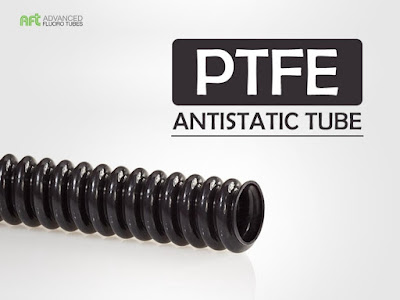While picking a polymer for their things, clients normally have requests concerning PTFE hose versus Teflon: what is the qualification between the two? The primary differentiation lies in the name. PTFE is the shortened name of the substance polytetrafluoroethylene, and Teflon is the trade name of a comparative polymer. In the event that you are scanning for an astoundingly versatile, non-stick material that is compound, electrical and warm sheltered, look no more distant than PTFE.
The History of Teflon
In 1938, a DuPont logical master named Roy J. Plunkett adventitiously discovered Teflon while attempting to make another chlorofluorocarbon refrigerant. DuPont authorized the new fluorinated plastic and selected the Teflon trademark in 1945. It was first familiar with individuals when all is said in done in 1960 as Teflon-secured (non-stick) searing skillet and cookware.
What are the Properties of PTFE?
PTFE has maybe minimal coefficient of pounding against any solid known to man
It is hydrophobic, which implies neither water nor water-containing substances wet PTFE
Unadulterated PTFE is artificially latent and significantly insoluble in numerous solvents or synthetics
It has a colossal working temperature go, showing thermally stable enough to be used between — 328ºF and +500ºF without undermining
PTFE has a high flexural quality, even at low temperatures
It has high electrical resistance and dielectric quality, especially at high radio frequencies
What are the Applications for PTFE?
About portion of all PTFE made is used for wiring in flying and PC applications (associate wires, coaxial connections, etc.) considering its amazing dielectric properties. Joined with its high dissolving temperature, PTFE is the perfect predominant substitute for the more delicate and lower-melting point polyethylene regularly used in ease electrical applications.
For mechanical use, PTFE's low crushing fits plain bearing, gears, slide plates, and various applications with the sliding movement of parts, outmaneuvering both acetal and nylon in these limits. PTFE makes longer-suffering, better parts that reduce granulating, wear, and imperativeness use of equipment, lower bolster costs, and augmentation the lifetime of the two segments and device.
Due to its high-temperature rating and remarkable non-reactivity, PTFE tubes are normally used as holders, advancement joints, liners in hose get-togethers, present day pipelines, and various applications including dangerous and responsive manufactured substances.
PTFE versus Teflon: What's in a Name?
Whether or not you call it PTFE or Teflon, this current material's astonishing adaptability grants it to be used in a staggering combination of things and applications in about every industry. The masters at Reading Plastic can machine and production any PTFE part you need with exactness and enormity.
The History of Teflon
In 1938, a DuPont logical master named Roy J. Plunkett adventitiously discovered Teflon while attempting to make another chlorofluorocarbon refrigerant. DuPont authorized the new fluorinated plastic and selected the Teflon trademark in 1945. It was first familiar with individuals when all is said in done in 1960 as Teflon-secured (non-stick) searing skillet and cookware.
What are the Properties of PTFE?
PTFE has maybe minimal coefficient of pounding against any solid known to man
It is hydrophobic, which implies neither water nor water-containing substances wet PTFE
Unadulterated PTFE is artificially latent and significantly insoluble in numerous solvents or synthetics
It has a colossal working temperature go, showing thermally stable enough to be used between — 328ºF and +500ºF without undermining
PTFE has a high flexural quality, even at low temperatures
It has high electrical resistance and dielectric quality, especially at high radio frequencies
What are the Applications for PTFE?
About portion of all PTFE made is used for wiring in flying and PC applications (associate wires, coaxial connections, etc.) considering its amazing dielectric properties. Joined with its high dissolving temperature, PTFE is the perfect predominant substitute for the more delicate and lower-melting point polyethylene regularly used in ease electrical applications.
For mechanical use, PTFE's low crushing fits plain bearing, gears, slide plates, and various applications with the sliding movement of parts, outmaneuvering both acetal and nylon in these limits. PTFE makes longer-suffering, better parts that reduce granulating, wear, and imperativeness use of equipment, lower bolster costs, and augmentation the lifetime of the two segments and device.
Due to its high-temperature rating and remarkable non-reactivity, PTFE tubes are normally used as holders, advancement joints, liners in hose get-togethers, present day pipelines, and various applications including dangerous and responsive manufactured substances.
PTFE versus Teflon: What's in a Name?
Whether or not you call it PTFE or Teflon, this current material's astonishing adaptability grants it to be used in a staggering combination of things and applications in about every industry. The masters at Reading Plastic can machine and production any PTFE part you need with exactness and enormity.

